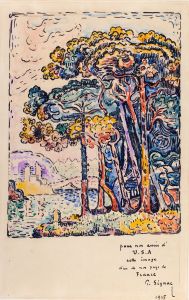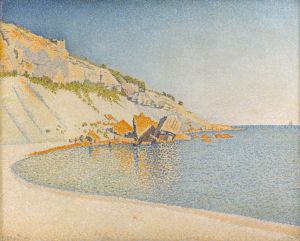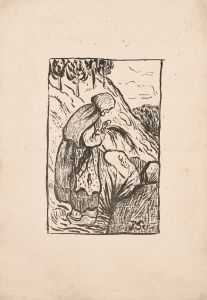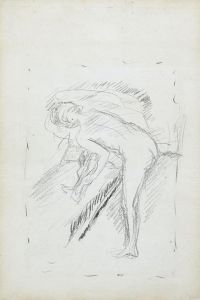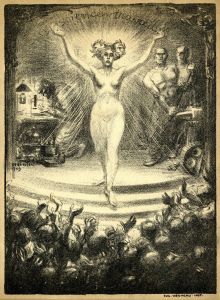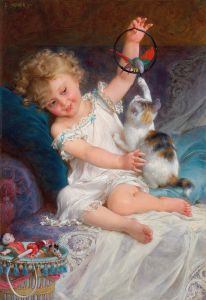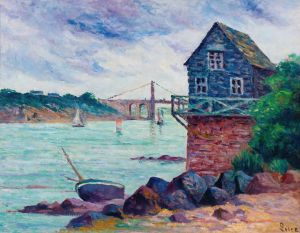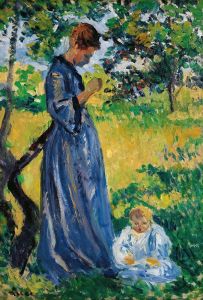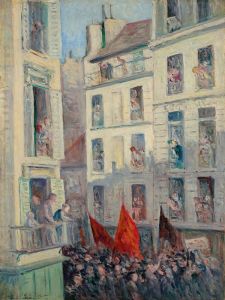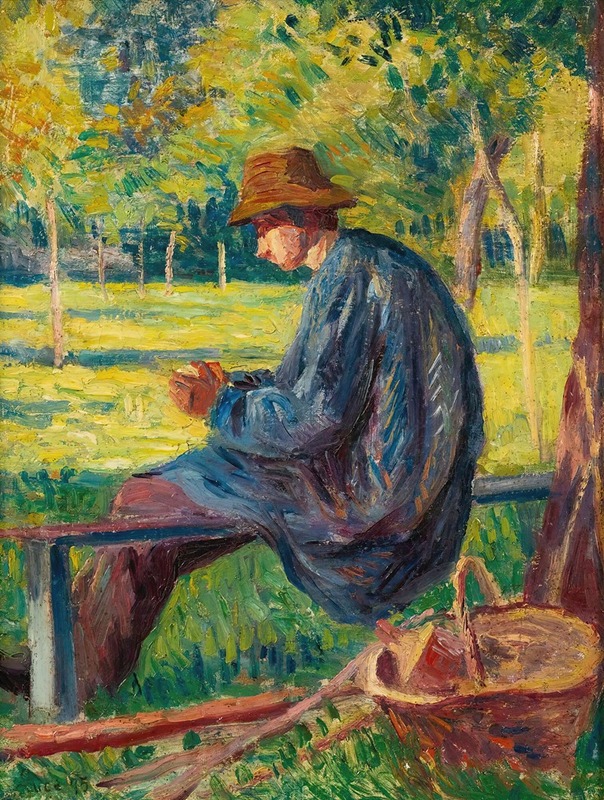
Ludovic Rodo Pissarro Dans Le Jardin De Son Père À Eragny
A hand-painted replica of Maximilien Luce’s masterpiece Ludovic Rodo Pissarro Dans Le Jardin De Son Père À Eragny, meticulously crafted by professional artists to capture the true essence of the original. Each piece is created with museum-quality canvas and rare mineral pigments, carefully painted by experienced artists with delicate brushstrokes and rich, layered colors to perfectly recreate the texture of the original artwork. Unlike machine-printed reproductions, this hand-painted version brings the painting to life, infused with the artist’s emotions and skill in every stroke. Whether for personal collection or home decoration, it instantly elevates the artistic atmosphere of any space.
Maximilien Luce, a prominent French Neo-Impressionist painter, created the artwork "Ludovic Rodo Pissarro Dans Le Jardin De Son Père À Eragny" in the late 19th or early 20th century. This painting is a notable example of Luce's dedication to capturing the essence of everyday life through the lens of the Neo-Impressionist style, which is characterized by its use of pointillism and vibrant color palettes.
The painting depicts Ludovic Rodo Pissarro, the son of the renowned Impressionist painter Camille Pissarro, in the garden of his father's home in Éragny, a small village in northern France. Éragny was a significant location for the Pissarro family, as Camille Pissarro moved there in 1884 and it became a hub for artistic creation and collaboration. The garden at Éragny was a frequent subject in Camille Pissarro's own work, and it served as an inspiring setting for many artists of the time.
Maximilien Luce was closely associated with the Pissarro family, and his friendship with Camille Pissarro influenced his artistic development. Luce was part of the Neo-Impressionist movement, which sought to build upon the innovations of Impressionism by incorporating scientific theories of color and light. This movement was characterized by the technique of pointillism, where small, distinct dots of color are applied in patterns to form an image. Luce's work often reflected his interest in social issues and the lives of ordinary people, and his paintings frequently depicted scenes of urban and rural life.
In "Ludovic Rodo Pissarro Dans Le Jardin De Son Père À Eragny," Luce employs the pointillist technique to capture the serene and intimate atmosphere of the garden. The use of small, precise brushstrokes and a harmonious color palette creates a sense of light and movement, drawing the viewer into the tranquil setting. The painting not only highlights Luce's technical skill but also his ability to convey the peacefulness and beauty of the natural environment.
Ludovic Rodo Pissarro, the subject of the painting, was an artist in his own right, following in the footsteps of his father. He was involved in the art world as a painter, printmaker, and art historian, contributing to the preservation and promotion of his father's legacy. The depiction of Ludovic in the garden at Éragny serves as a testament to the close-knit relationships and mutual influences among artists during this period.
The painting is a reflection of the collaborative spirit and shared artistic goals of the Neo-Impressionists, who were united by their desire to explore new techniques and perspectives. Luce's portrayal of Ludovic Rodo Pissarro in this idyllic setting underscores the importance of familial and artistic connections in the development of modern art.
Overall, "Ludovic Rodo Pissarro Dans Le Jardin De Son Père À Eragny" is a significant work that exemplifies Maximilien Luce's mastery of the Neo-Impressionist style and his ability to capture the essence of his subjects with sensitivity and precision. The painting remains an important piece in the study of Neo-Impressionism and the interconnected lives of the artists who shaped this influential movement.





